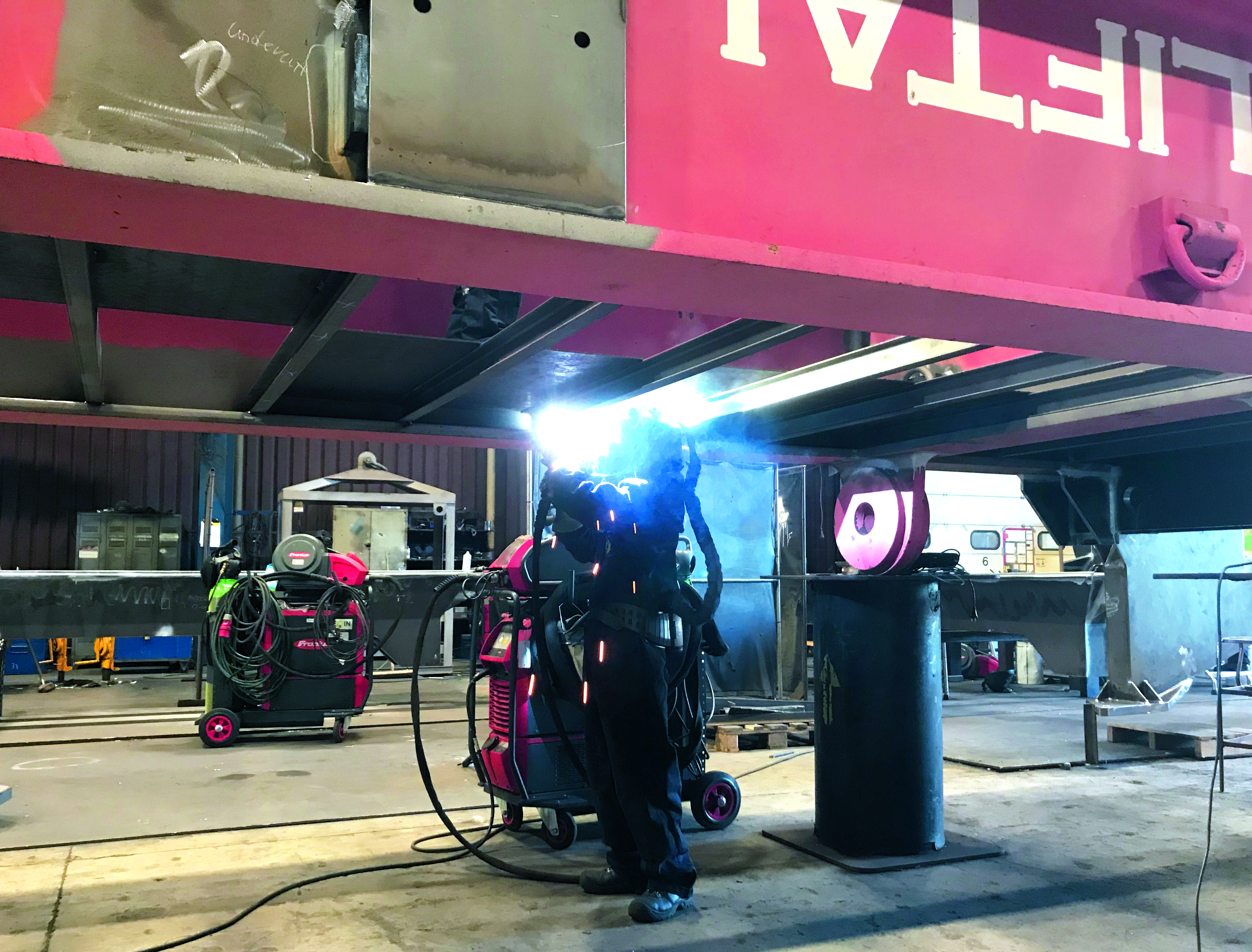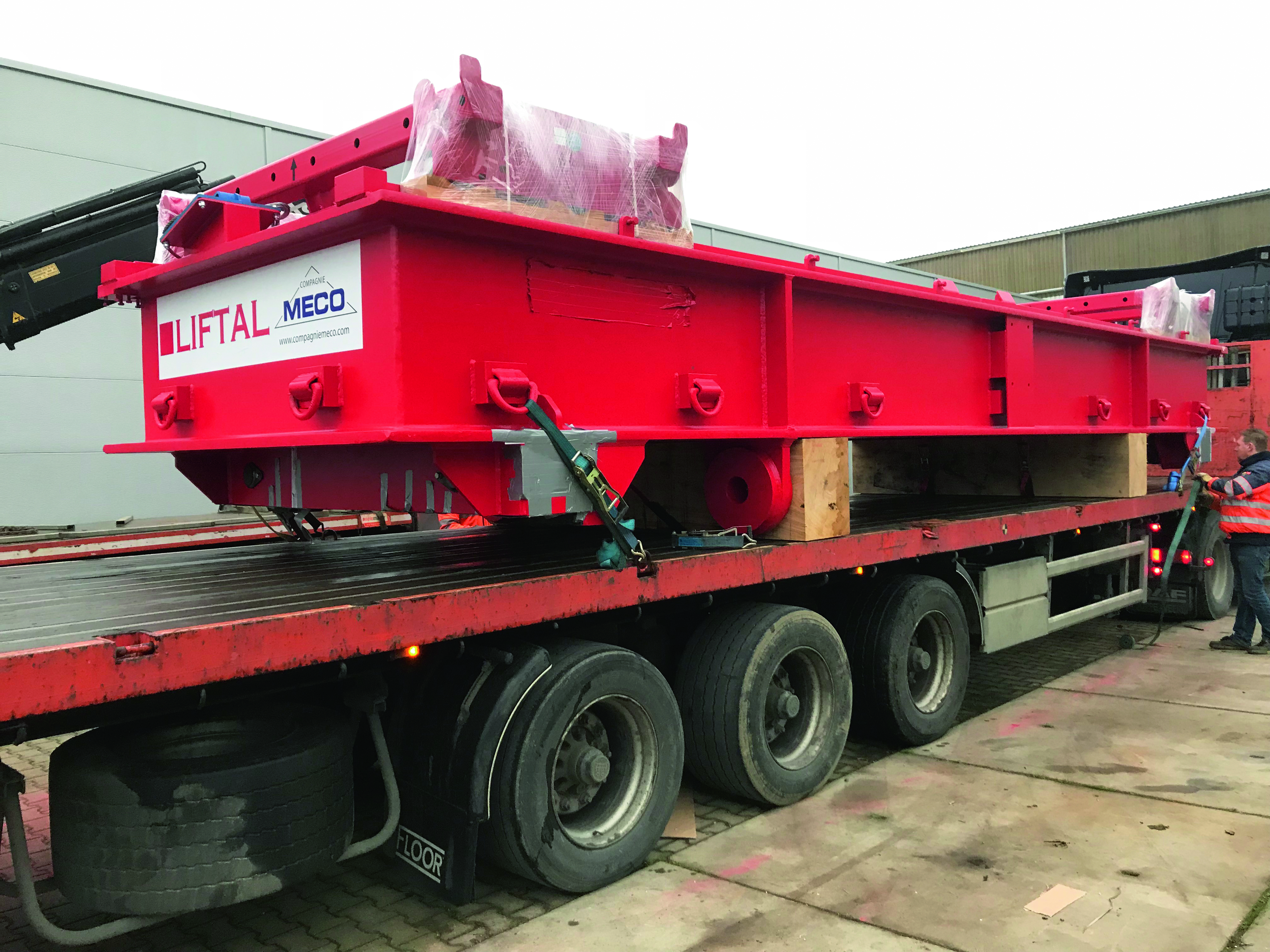Liftal has already been acting as a full-service specialist in lifting and hoisting technologies since 1997. The company offers a broad range of services, including advice on all kinds of hoisting, lifting, and fall protection challenges, and provides a broad range of products and custom solutions, installation, maintenance, repair, testing, inspecting, and certification of equipment.
Modifications on test frame.
From its location in the Vlissingen port area, Liftal has attracted a variety of customers, ranging from shipowners to power plants. Liftal has in a recent project demonstrated its capabilities of acting quickly, flexibly, and securely.
Nuclear power plant
“Together with our French partner Compagnie Meco and DEKRA, we were granted an assignment by a French nuclear power plant,” explains Mr Hans Hirdes, Manager at Liftal. “Our job was to test the rail of a newly installed 360° 320t crane. This is usually an everyday job, but in this case the crane ran at 40m height, and the reactor was already installed below the crane, leaving us with hardly any working space. In fact it was impossible to test the rail in the preferred manner, which is from below.” So a plan had to be concocted to overcome this barrier. Within nine weeks of engineering and fabrication, the team was ready to start the test preparation. Mr Hirdes continues, “Once we were ready for the actual testing, the customer allowed us ten working days. We consequently decided to work in three shifts.”
Careful manoeuvring
“Because of the limited space available, we first had to bring in the testing gear in pieces using multi wheels. This really was a matter of careful and accurate manoeuvring. Once everything was inside the plant, the pieces were lifted to the necessary height. For this task, we had to use the hoist on top of the building. As the hoist was fixed to the centre of the circular shaped building, we had to create a solution involving a moving installation, in order to correctly position the pieces of the test weight from the centre. Altogether, we are talking about a total test weight of 420t, and lifting this weight into position one by one was very time-consuming.”
Pushing the boat out
All hands were on deck for this project, with a crew of fifteen individuals working per shift. “We really had to push the boat out, as we wanted to finish the job as scheduled. On the other hand, we had to take great care in working safely due to the height we were working at. Once we had finished the job - testing the circular-shaped rail with a dynamic weight of 380t and 420t of static weight - the dismantling of the used equipment had to be executed just as carefully as the installation. There was a high risk of tools and parts falling during the installation and dismantling of our test equipment. So apart from working fast, we also needed to work very carefully.”
One day before planning
The test proved to be an excellent reference project, as Liftal completed the job one day before planning, and with compliments from the customer. Mr Hirdes adds, “This type of project only occurs once in a while. It was one of our biggest projects in the past five years. It required a lot of preparation with comprehensive measuring and fitting. As this was a unique project, we had to think out of the box to find the right answers for the challenges we were confronted with. As this type of assignment is scarce, they will never become routine. On the other hand, with this kind of work we can show the market what we are capable of. It demonstrates that our strength lies in acting fast, always in good collaboration with our partners.”
Offshore wind opportunity
Acting in many markets, Mr Hirdes sees ample opportunities in the offshore wind market. “A lot of lifting and hoisting equipment is used in this upcoming market. Heavy-lift cranes are used for loading and unloading the various turbine parts and as no windfarm is the same, this lifting equipment needs to be tested and certified for almost every new project. Most wind turbines are equipped with a small service crane. Because of the circumstances at sea, these cranes require regular maintenance and testing. There are hence ample opportunities for us in many respects,” states Mr Hirdes.
Preparing the test frame for shipment.
In-house service centres
Another development that Mr Hirdes is enthusiastic about is the set-up of in-house service centres at the customer’s location. “We recently opened service centres at the facilities of some our customers. With this dedicated service towards our clients, we can very rapidly respond to their requests for help. We have all kinds of tools and equipment available at these centres, as well as spare parts for the maintenance, repair, and testing of their lifting equipment. As this type of service fits into our future ambitions perfectly, we hope to extend the number of service centres.”
Seize with both hands
Apart from the Vlissingen location, Liftal also has a facility in Belgium. Looking at the recent merger of the Port of Ghent and Zeeland Seaports into North Sea Port, Mr Hirdes is optimistic about the opportunities that this merger will offer. “As we are operating on both sides of the border, with our extensive knowledge of both the Dutch and Belgian rules and regulations on lifting and hoisting and with our broad experience, we think that the merger into one port area will bring us bounteous opportunities, which we look forward to seizing with both hands.”



